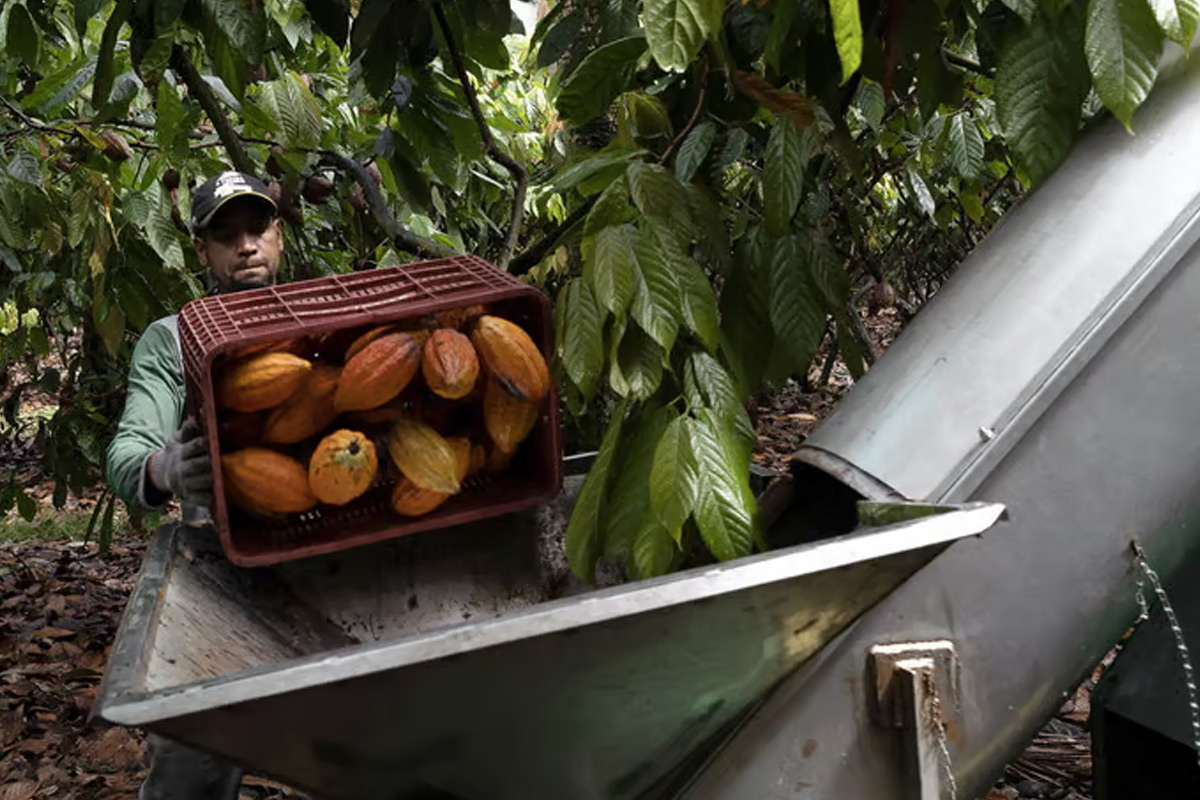The latest El Niño weather cycle has ended. Latin America’s farmers are assessing the damage. It is mostly bad news. Many places flooded, while others suffered extreme heat and drought. Harvests of most staples have been meagre. Falling prices have added insult to injury, eroding farmers’ profits.
But cocoa, the core ingredient in chocolate, is bucking the trend. Output has risen in Ecuador and Brazil, the region’s two largest growers, as well as in countries like Peru, Colombia and the Dominican Republic, which produce less. That is mostly down to luck. The areas where cocoa is grown, such as the coastal provinces in Ecuador and north-eastern Brazil, escaped the worst of the weather.
And the price of cocoa has surged over the past six months too, thanks largely to the collapse of production in west Africa, where most of it is grown. The value of exports from Latin America has shot up. Ecuador earned 32% more selling cocoa to overseas buyers in 2023 than it did in 2022. Exports then tripled in value from the beginning of the year, compared with the same period in 2023. Cocoa has become one of the region’s most valuable exports.
In west Africa growers are paid a fixed price set by their governments. Latin American producers sell at the global market price. Their counterparts in Ivory Coast and Ghana get $2,460 for every tonne of cocoa, even as the global price oscillates around $10,000 (see chart).
Tempting though it may be to bank the windfall cash, many farmers spy an opportunity to invest in order to produce more. Many are buying high-yielding seedlings, expanding their growing areas and planting cocoa instead of less profitable crops.
National agricultural associations are backing the investment. To increase efficiency they are boosting availability of fertiliser, providing advice about effective pruning, managing pests and spotting disease. Latin America’s cocoa farmers collect well under a tonne of crop per hectare. Most cocoa-growing countries in the region are trying to double that.
The hope is to return Latin America’s cocoa industry to its former glory. Brazil was the world’s largest grower until its crop was clobbered by fungal disease in the late 1980s and early 1990s. In 2023 its agriculture ministry unveiled a plan to produce 400,000 tonnes by 2030, up from 290,000 in 2023. Ecuador’s government is even more ambitious, aiming for 800,000 tonnes in 2030, up from 420,000 last year.
The industry will need to harness technology in order to lift output if it is to meet these targets. That is beginning to happen. Some tasks that have traditionally been done by hand are now being mechanised. But most Latin cocoa farmers are smallholders with a handful of hectares apiece. Smart irrigation systems and harvest-automating machinery don’t pay off when used on such small patches.
World cocoa prices may of course fall. Farmers who invest in increasing output risk being saddled with unsold stock, or having to offload it cheaply. But even if better weather in west Africa prompts cocoa production to bounce back next year, the long-term outlook there is gloomy. Most of its farmers are old and poor. Their national cocoa authorities are inefficiently run and in some cases are almost bankrupt. Tough European Union regulations on deforestation are due to come into force next year. These will hurt African producers more than Latin American ones, as they export more to the eu.
Sluggish African production will probably mean global cocoa prices stay high because so few other countries can grow the crop. The plant is finicky. Where banana yields some 25 tonnes per hectare, cocoa yields about 500kg on average. It needs high levels of humidity and warm overnight temperatures to thrive, with regular rainfall and sunshine (though not too much). So it likes low elevations, close to the equator. Not many places offer this. In the long run climate change is likely to limit production, with the best growing areas being disrupted. This will prop up prices. Demand is strong and growing, partly because Asians are eating more chocolate. That should reassure Latin America’s cocoa farmers. Their challenge will be finding ways to pay for new technologies in order to produce more.







